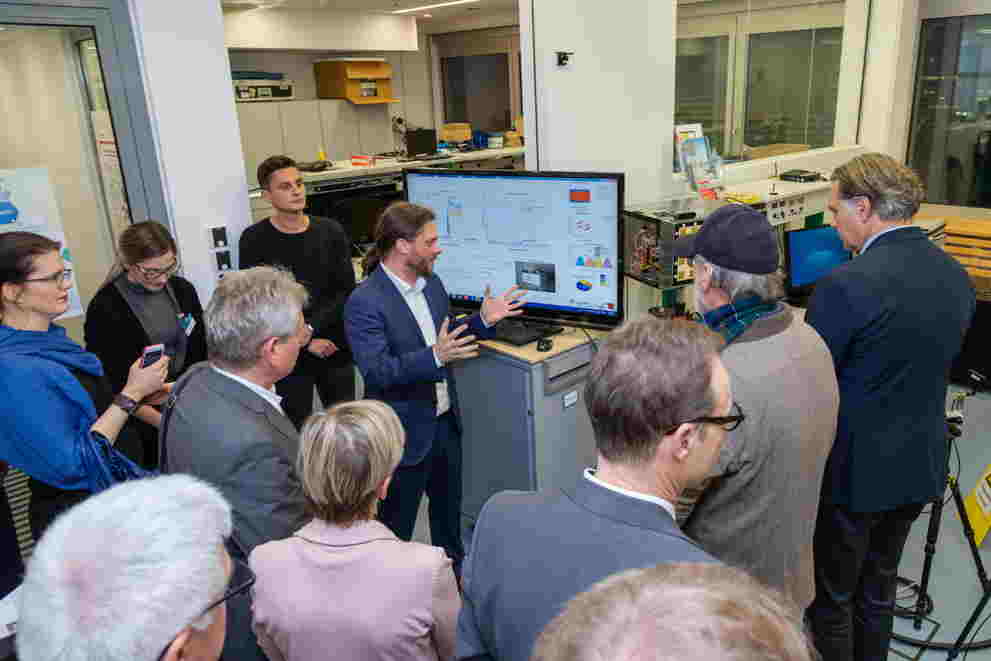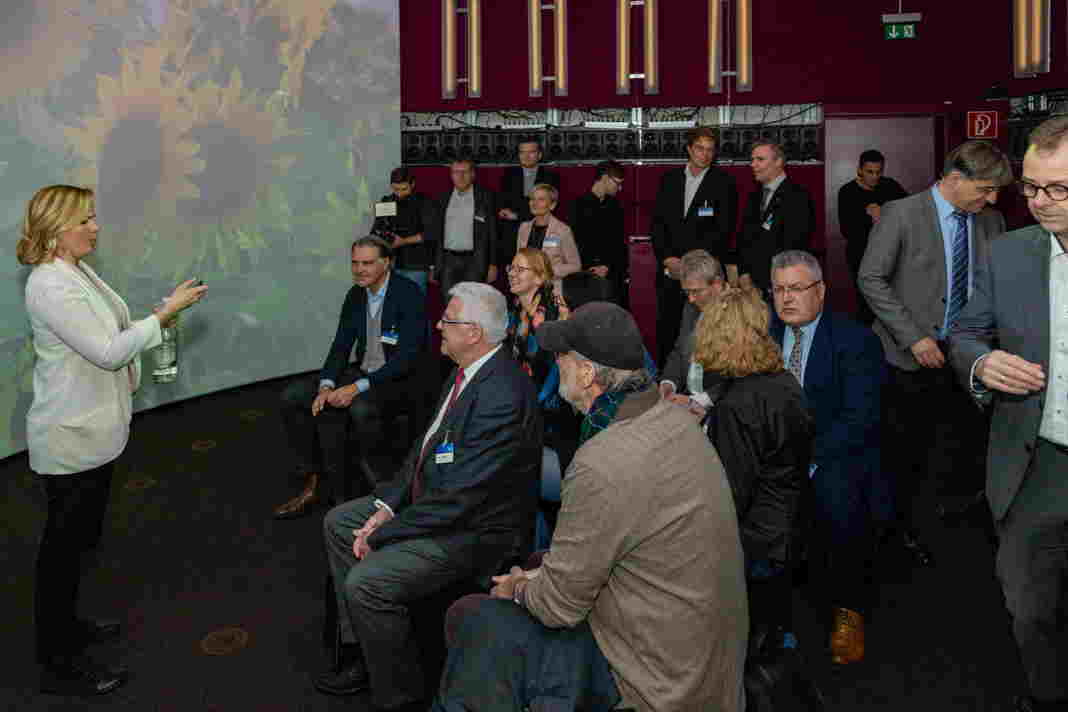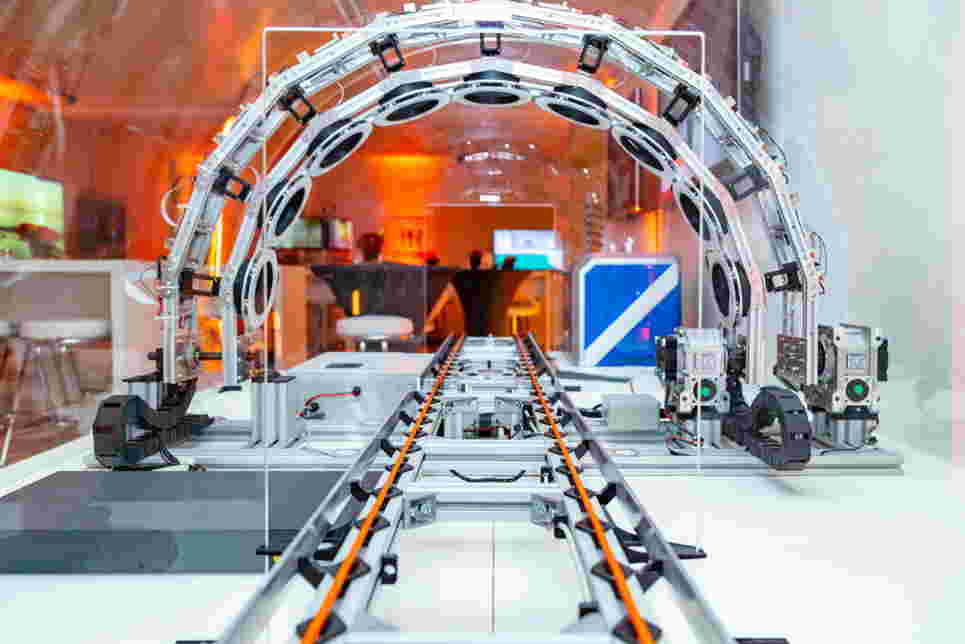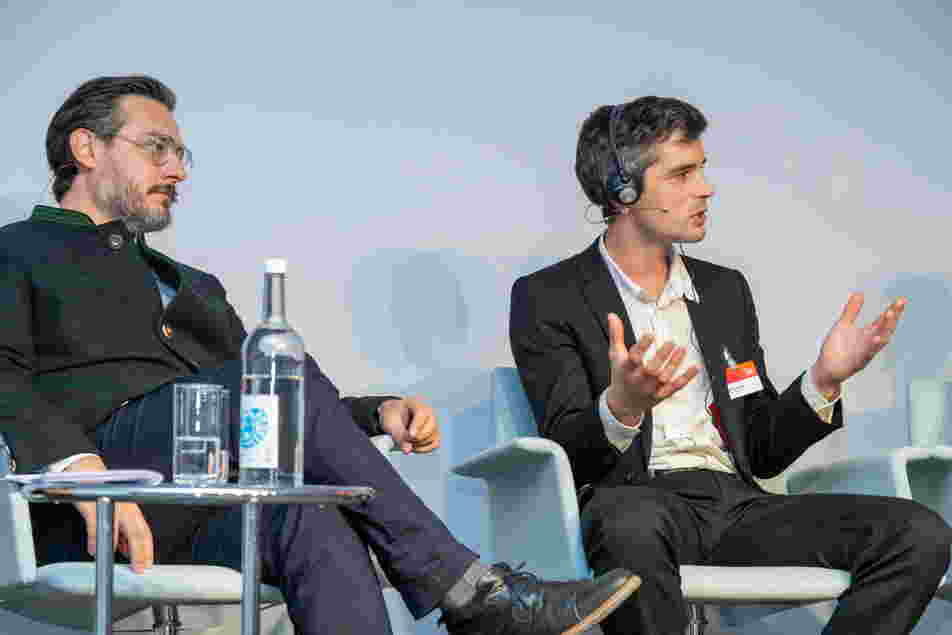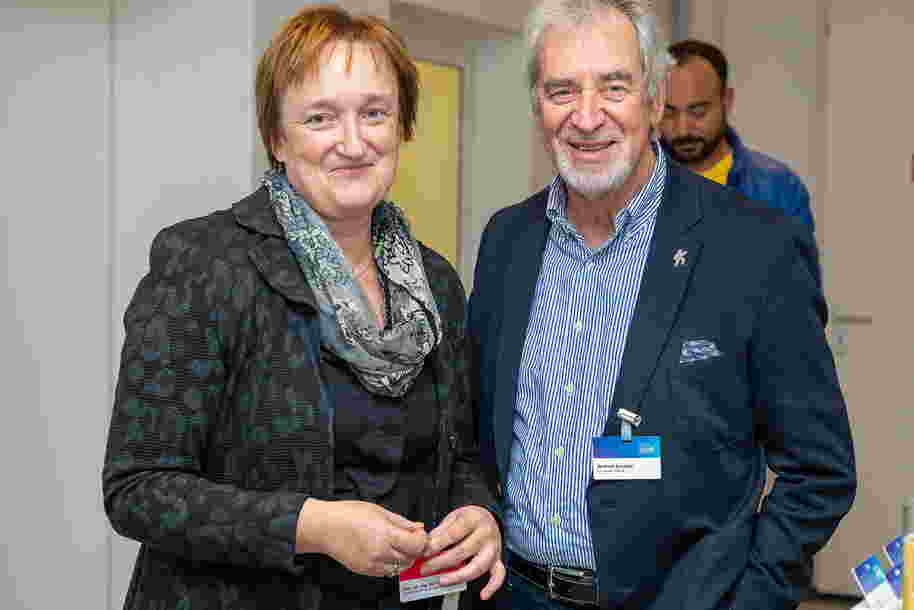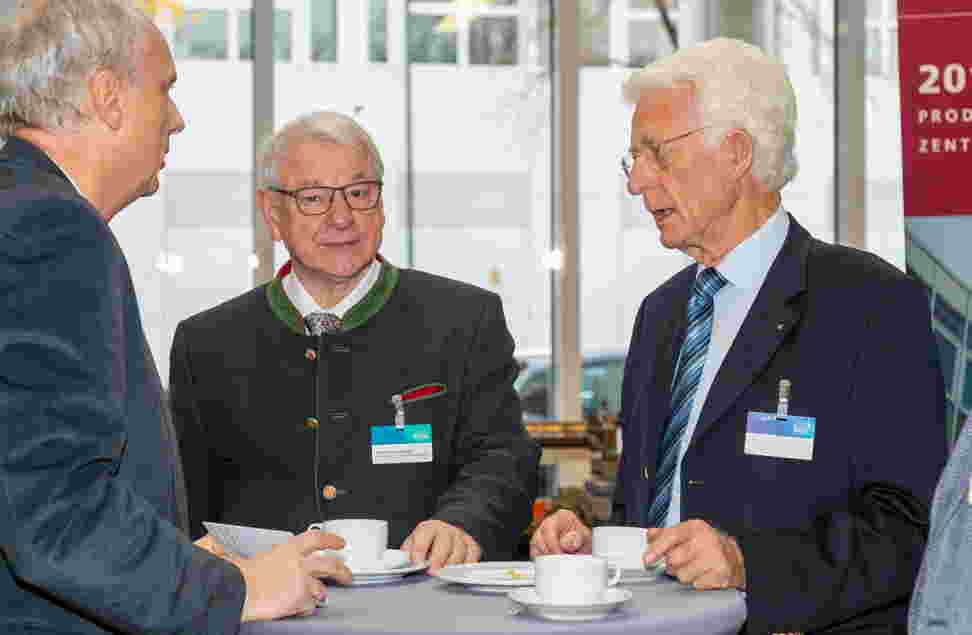
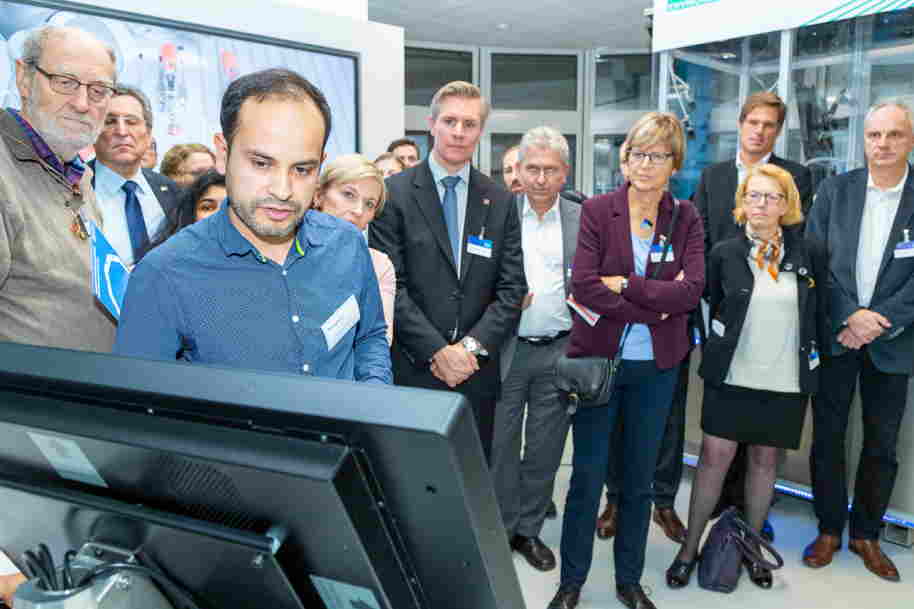
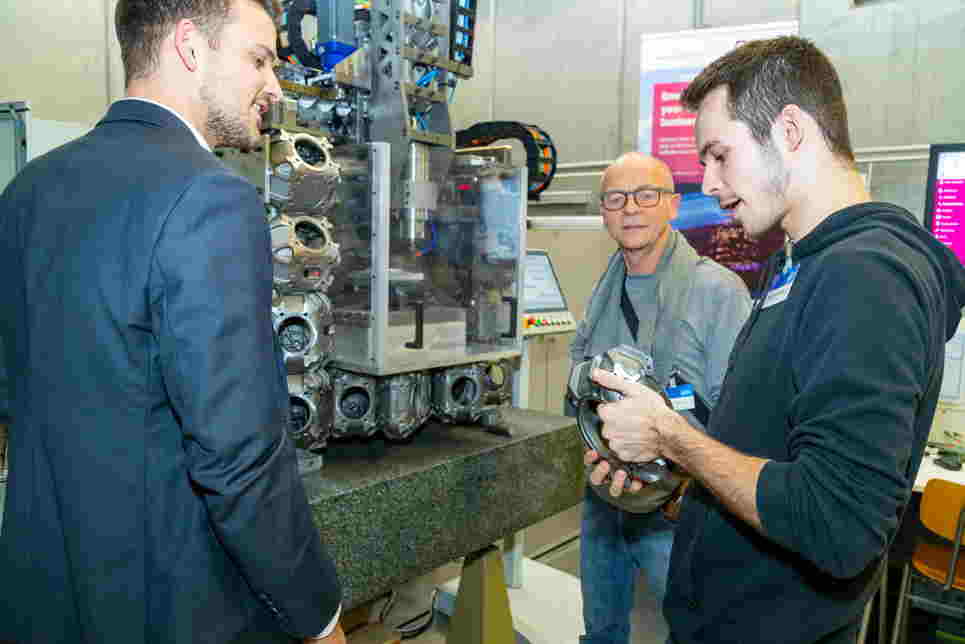
AI already permeates many spheres of life today. At the 4th Fraunhofer Alumni Summit in Berlin on 20 November, many of the attending former employees of Fraunhofer were able to form a comprehensive picture – on tours of the Fraunhofer IPK, the Heinrich Hertz Institute or through the high-caliber speakers from the fields of politics, science, research and economics at the summit's specialist symposium. And of course there were plenty of networking opportunities for the former personnel of the Fraunhofer Gesellschaft.
More than 130 participants came to Berlin on November 20 for the 4th Fraunhofer Alumni Summit at the Fraunhofer IPK and Fraunhofer HHI. For many of the visitors it was a reunion with their former workplace. The Fraunhofer Institute for Production Systems and Design Technology IPK impressed with presentations in the large works hall and with AI-based solutions, for AI-supported gripping in robotic arms for instance. The Fraunhofer Institute for Telecommunications, Heinrich-Hertz-Institut HHI, presented the latest research in optimizing 5G mobile communication technologies with the support of AI. In the HHI's TiME Lab (Tomorrow’s Immersive Media Experience Lab), visitors could also get an idea of how we will experience cinema films in future.
The highlight of the evening was the Summit Night with its presentations and the podium discussion. "In 2019 we are celebrating 70 years of Fraunhofer, our alumni were part of this success and contributed to the fact that in 2019, the Fraunhofer Gesellschaft has grown into an organization with just about 28,000 employees and turnover of around 2.8 billion euros," said Prof. Alexander Kurz, Chairman of the Board and Executive Vice President Human Resources, Legal Affairs and IP Management of the Fraunhofer Gesellschaft. "But figures aren't everything, and today it is mainly about contents and people." In terms of content, Dr. Michael Mertin, Management Consultant, Executive Vice President of Fraunhofer-Alumni e.V. and Fraunhofer ILT alumnus, moderated the evening.
Augmented intelligence und domain knowledge
Dr. Roland Busch, Deputy Chairman of the Managing Board, CTO and Member of the Managing Board of Siemens AG, used impressive examples to illustrate how Siemens AG benefits from the use of artificial intelligence: "Previously we told robots what they should do. Tomorrow the machines will decide for themselves how to do it."
Siemens is thus training industrial robots that independently grip completely different work pieces. Another example is an autonomous tram which avoids accidents with the aid of artificial intelligence. The driver can therefore concentrate on other tasks.
"Everything is becoming digital and we at Siemens believe that the combination of AI and domain knowledge is decisive. Therefore we are also not investing in general AI for the solution of arbitrary problems, but are concentrating on very specific issues," said Dr Busch. An example of this is a pilot project in purchasing at Siemens. The company has around 200,000 suppliers and every year purchases goods and services for around 40 billion euros via around three million orders. "For certain purchasing patterns we use AI algorithms and apply a limit to essential data such as supplier, time of delivery and historical values – in view of the magnitude of the data, the computer can make such decisions better than purchasing personnel. They can then concentrate on strategic topics." Thanks to this augmented intelligence solution, the company could save a significant amount, says Busch.
The fact that a companion approach can lead to better results is also shown in the evaluation of radiology data. "The best results are achieved when AI and the radiologist work together. The system makes a pre-selection and the medics ultimately make the decision," explains Busch. "We don't want to eliminate people, but try to get them to focus on what is essential."
In the case of so-called "Generative Design" artificial intelligence can provide additional value. The company has thus had a high-temperature burner with certain requirements constructed by AI. Inspired by the structure of a fennel bulb, the construction requires 50 percent fewer parts and lower costs by 60 percent. "In this example, the computer has developed a design which an engineer may perhaps never have come up with," said Busch.
The market for artificial intelligence will be worth several billion dollars in the coming years. Nevertheless, Busch also sees constraints, such as data problems for example: highly-paid AI specialists spend 70 percent of their working time on processing data. In many companies – above all in the production sector – there are too few skills in the field of AI. Points such as data security and lack of trust in AI solution conceal additional challenges. Siemens is therefore looking intensively into how AI could be created responsibly, in an explainable and also robust manner.
"Industrial design also requires in-depth domain knowledge," emphasizes Busch. "On the Moscow to St. Petersburg train route, the operators have traveled 13 million kilometers with our trains without a single technical delay. Although there was about as much wear and tear and malfunctions as could be technically expected, our analyses enabled us to predict each imminent failure with a precision of seven to ten days and were able to prevent it though prompt maintenance." However, for this data evaluation very specific knowledge is required. "Therefore it is vital that AI experts work together with the specialist personnel with domain knowledge – a developer cannot work on a solution for a turbine in the morning and optimize a train in the evening."
